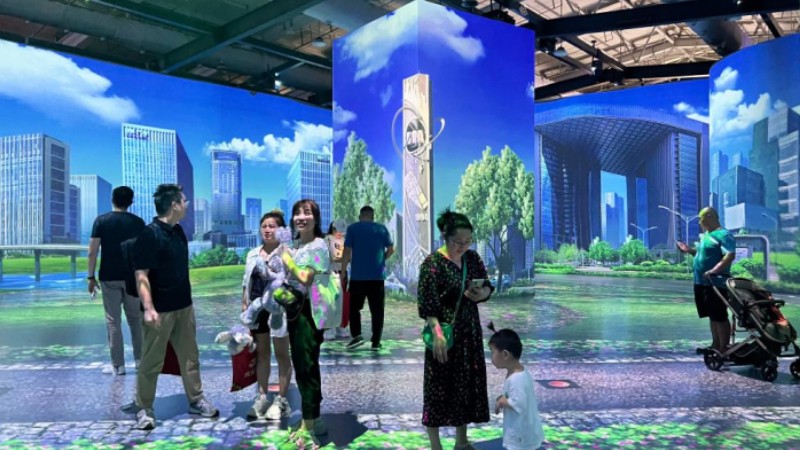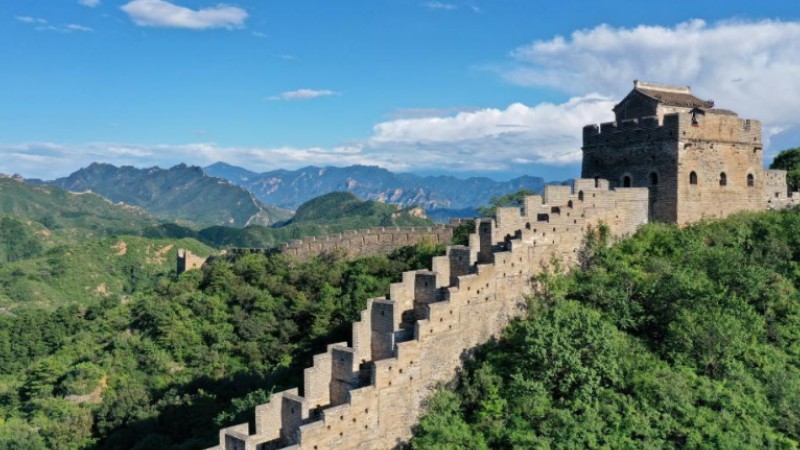Green development pursued along China's major rivers
HEFEI, Sept. 11 (Xinhua) -- Wu Haihua, 86, often immerses himself in reading for hours at a library situated along the bank of the Yangtze River amidst the pleasant riverside ambiance.
It's hard to imagine that before 2012, this area of Tongling City, in east China's Anhui Province, used to be a densely packed port with severe industrial pollution. Massive changes took place here by the end of 2015.
"Where the library stands today used to be a port, fully piled up by mineral ores and sands to be transported along the Yangtze River," said Wu, adding that nobody liked to be anywhere close to the river.
As an old industrial city renowned for non-ferrous metal smelting, Tongling has continuously delved into the exploration and development of its former industrial areas during the process of transformation.
In November 2012, Tongling officially initiated the revitalization of its riverside ecological zone. A total investment of approximately 480 million yuan (about 66.5 million U.S. dollars) was pooled to create a riverside ecological scenic belt stretching 6.3 kilometers in length and covering an area of over one million square meters.
The library that Wu often visits is part of the project.
"We did our best to preserve the original look of the port, trying to integrate both ecological ideas and industrial memories into the architecture," said Yuan Kun, who's in charge of the library. The 500-square-meter library, holding more than 7,000 books, has become very popular among locals. It has received more than 1 million visitors since its opening at the end of 2015.
Similar changes have also been taking place in Anqing, a city by the Yangtze about 100 kilometers upstream of Tongling. Industrial areas in the city center have been transformed into cafes, sports venues, and shops, among others, but some old machines have been kept to hand down the city's history.
China has been playing a responsible role in global environmental and climate governance, pledging to peak its carbon dioxide emissions before 2030 and achieve carbon neutrality before 2060.
Residents along the Yellow River, another major river in China, have also witnessed concrete actions being taken to protect the local environment.
As a traditional large-scale metallurgical enterprise, Ningxia Jiyuan Recycling Development Co., Ltd. has explored a way of recycling its industrial exhaust gas and solid waste.
Located in Shizuishan City, northwest China's Ningxia Hui Autonomous Region, the company, through biological fermentation technology, is able to convert the carbon monoxide in the exhaust gas of mineral furnaces into fuel ethanol. Besides, the by-product of feed protein is obtained during the process.
"This project will turn industrial exhaust gas that contains carbon monoxide into clean fuel, and reduce carbon emissions by about 180,000 tonnes per year," said Mo Junhong, the company's general manager.
Photos
Related Stories
- Smart energy powers China's green development
- U.S. museum to present exhibition on cultural riches of China's Yangtze delta
- Clean shore power delivers greener Yangtze River cruise, shipping
- China inspires global green development with desert control experience
- Xi Story: All-out efforts to preserve Yangtze River ecology
Copyright © 2023 People's Daily Online. All Rights Reserved.









